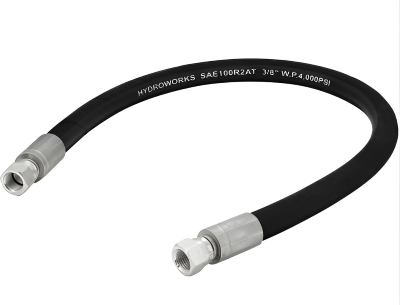In the realm of hydraulic systems, where precision and efficiency dictate the success of operations, 3/8 hydraulic fittings emerge as essential components. These fittings, with their specific size and design, play a pivotal role in ensuring the seamless flow of hydraulic fluids.
Deciphering Hydraulic Fitting Sizing
Understanding 3/8 Hydraulic Fittings
At the core of hydraulic systems lie hydraulic fittings, and among them, the 3/8 hydraulic fitting stands as a notable contender. The fitting’s size is designated as “3/8,” suggesting that it can be used with hydraulic lines or other parts that have a 3/8-inch diameter.
Key Components of Sizing
When it comes to sizing hydraulic fittings, two primary dimensions come into play:
Thread Size: Hydraulic fittings are often threaded to ensure secure connections. The thread size, denoted in inches or millimeters, indicates the diameter and pitch of the threads. Common thread sizes include NPT (National Pipe Taper) and BSPP (British Standard Pipe Parallel).
Hose Inner Diameter: The inner diameter of the hose or component that the fitting attaches to is a crucial factor. The 3/8 hydraulic fitting corresponds to hoses or components with a 3/8-inch inner diameter.
How are Hydraulic Fittings Sized?
Thread Identification
Hydraulic fittings are sized based on thread identification, which includes the thread size and type. Accurate thread identification ensures that the fitting threads match those of the connected components, guaranteeing a secure and leak-free connection.
Matching Hose Inner Diameter
Selecting the right hydraulic fitting also involves matching the fitting’s size to the inner diameter of the hose or component it connects to. In the case of 3/8 hydraulic fittings, the fitting’s dimensions are compatible with hoses or components having a 3/8-inch inner diameter.
Versatility and Application
3/8 hydraulic fittings find their place in a myriad of applications across various industries. From industrial machinery to automotive systems, these fittings facilitate fluid transfer, pressure regulation, and effective control.
Compatible Fluid Flow
The sizing of 3/8 hydraulic fittings ensures that they accommodate fluid flow rates suitable for applications where moderate flow is required. Their design strikes a balance between efficient fluid transfer and space considerations.
Pressure Handling
3/8 hydraulic fittings are also designed to handle specific pressure ranges, making them suitable for applications that require controlled fluid movement under particular pressures. The compatibility of these fittings with their corresponding hoses or components ensures a harmonious system.
Choosing the Right Hydraulic Fitting
Selecting the appropriate hydraulic fitting involves meticulous consideration of factors beyond sizing:
Material Compatibility: Choose a material that is compatible with the hydraulic fluid and the system’s operating conditions to prevent corrosion or degradation.
Thread Type: Ensure that the thread type of the fitting matches that of the connected components to guarantee a secure connection.
Application Demands: Assess the application’s requirements, including fluid flow rate, pressure levels, and environmental conditions, to select a fitting that meets those demands.
Conclusion
3/8 hydraulic fittings, with their precise sizing and thoughtful design, exemplify the intricacies of hydraulic systems. Their compatibility with 3/8-inch hoses or components, coupled with their capacity to facilitate fluid flow and pressure regulation, make them essential components in various industries. Understanding how hydraulic fittings are sized and their role in system functionality empowers engineers and operators to make informed decisions, ensuring the efficiency and longevity of hydraulic setups.
Post time: Sep-01-2023


